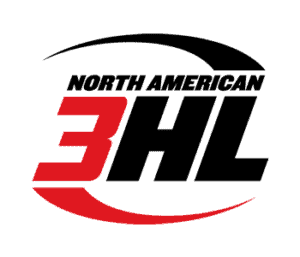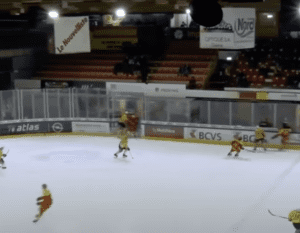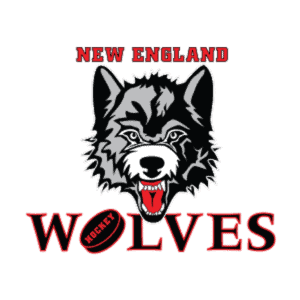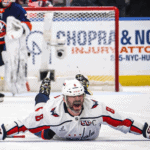So you want to play National Collegiate Athletic Association (NCAA) Division I hockey? Or maybe make it to the National Hockey League (NHL)? Even with top-end talent and a great work ethic, the path to either is not clear-cut.
In today’s youth and Junior game, where hockey is much more of a nationwide sport than it used to be in terms of top-end talent, the path to NCAA Division I can lead down many different roads.
Gone are the 1970s and 1980s where the almost exclusive non-Canadian options were Minnesota high school or New England prep schools.
Navigating the road to the NHL also used to have a consistent theme – go to Canada to play Major Junior hockey in the Western Hockey League (WHL), Ontario Hockey League (OHL) or Quebec Major Junior Hockey League (QMJHL).
As USA Hockey (USAH) grew its footprint and the game expanded far away from the traditional areas in the United States, the tide began to turn for U.S.-born hockey players.
For starters, the evolution of hockey in non-traditional areas helped usher in the advent of the United States Hockey League (USHL) becoming the dominant Junior league for NCAA Division I talent. Around the turn of the century even Minnesota high school and New England prep players started leaving school to play in the USHL if they were deemed top-end quality. The top players in the United States started meeting in the USHL to develop.
In 1996 USAH started the National Team Development Program (NTDP) and it enjoyed a parallel and intertwined trajectory as it started to find its footing and create success on its own. The NTDP has, at times, played its teams in the USHL and the North American Hockey League (NAHL) as full-season or partial season opponents.
Obviously, the NCAA Division I programs took note of the USHL’s and NTDP’s dominance in development and the momentum fed on itself. As noted in this October 9 TJHP article, almost 700 players on 2019-20 NCAA Division I rosters matriculated from the USHL.
Because many USHL players were coming up on their draft year, the National Hockey League (NHL) also started taking notice as will be noted later in this article.
In 2008 the NCAA Division I hockey league commissioners, who are loosely organized as the Hockey Commissioners Association (HCA), became ready to take action after years of looking hard at the number of players leaving the United States to play Major Junior hockey north of the border. As of the 1971-72 season, Major Junior players became ineligible for NCAA hockey participation so a player making the Major Junior choice could not put that toothpaste back in the tube.
In April 2008, during the NCAA Frozen Four, the website playcollegehockey.com was launched by the HCA as an informational vehicle to answer questions about NCAA Division I hockey and eligibility, while promoting the college hockey path.
The website’s success and the growing emphasis on keeping players in the United States, or at least keeping them NCAA-eligible, led to the launch of College Hockey, Inc., (CHI) in November of 2009. CHI was and is funded by the Division I leagues and through a grant money from the NHL, via USAH. For the past 10 years CHI has been an active outreach organization, promoting the path to college hockey anytime and anywhere.
The success of CHI is evidenced by the data. As U.S. players increasingly kept their college options open, the number of NCAA placements rose dramatically, as did the NHL draft picks. In 2009 there were 19 USHL players drafted while 2019 saw a record 52. Thirty-three percent of NHL players on 2019-20 opening night rosters had college experience, compared with 26 percent in 2008-09. Below you can see the trend of NCAA players on NHL rosters over the past 18 years.

While there is no formal “draft” money paid by the NHL to the NCAA when players are chosen, there is a deep-seated marketing interest on behalf of the NHL, according to CHI deputy executive director Nate Ewell, who has been with the organization since the beginning. “The NHL sees the benefit that college basketball and football give to the NBA and NFL. The NHL is interested in all developmental paths (as it is a worldwide league) but the league knows there is strength in associating the league with NCAA teams and former players.”
CHI recently hired a new Director of Education in Sean Hogan, who is charged with heading up the outreach effort to educate young hockey players and parents about the path to college hockey. Over the past decade CHI has had a number of younger, coaching-minded people in this position but Hogan brings a steadier and more experienced background to the position.

“I’m a little older and have already been down the coaching path for many years,” said Hogan. He is a former American Collegiate Hockey Association head coach who won a national championship at Oakland (Mich.) University before moving to Ohio University. “I’m passionate about college hockey and always have been. I am definitely looking forward to working with players and families as they start to think about (their hockey futures).”
Hogan’s position with CHI becomes even more important given the NCAA’s two new recruiting rules regarding prospect contact with coaches and verbal commitments:
- Starting this year, players cannot communicate with NCAA coaches prior to January 1 fo their sophomore year in high school.
- Players cannot agree to a verbal scholarship commitment with a coach or program prior to August 1 prior to their junior year in high school.
This provides a seven-month window for the very high-end players to communicate with and commit to — if they so choose — a NCAA Division I program. These two rules will need to be circulated by people like Hogan for a few years before they become known to the players and parents who matriculate into that age category each year.
They were much-needed as hockey was no different than other sports where verbal commitments were getting younger and younger. What made things worse in hockey is that many players wait until they are 19 or 20 to head to college. “The early commitments created a wake of anxiety for players and parents who weren’t talking to coaches yet,” said Hogan. “We can tell them now to trust the process, work for the process and open your eyes at age 17 or 18. More and more kids now are committing at age 18 and 19 which is a good thing.”
A prime example of the need to rein in the verbal agreement and recruiting processes was Maine product Oliver Wahlstrom, who committed to Maine as a 13-year-old, then to Harvard as a 15-year-old, and eventually ended up playing a year for Boston College in 2018-19 before turning pro. Wahlstrom did nothing wrong. He was just a great youth hockey talent who had many potential suitors. But he and others made the NCAA examine the absurdity of pre-teens committing to NCAA universities. The future Wahlstroms won’t have to worry about college hockey until they are done with their sophomore years in high school at the earliest.
Another area about which Hogan has to regularly educate players is that of the Major Junior drafts. “The U15 year is pretty important to us as they become eligible for the OHL draft. The WHL drafts a year younger at Bantam major,” said Hogan. “My job is to talk about the positive aspects of NCAA hockey, not to compare the development paths. Elite players are now trending more toward college hockey where 10-15 years ago they were heading to Canada.”
“The perception is not the reality of college hockey,” continued Hogan. “When you ask a U15 payer a question like, ‘If U.Ss college hockey was a car, how would you describe it?’ a lot of answers come up like a truck. A reliable, safe approach. Same question with Major Junior and they answered more of a sports car. The perception is not reality as the numbers will show.”
An often-touted positive about college hockey by CHI is the fact a player is enrolled in a four-year institution. Should their hockey prowess stop developing they are still on a degree path. In 2009 when CHI formed the graduation rate for men’s ice hockey was 79.2 percent. In 2019 it was 95.8 percentand led all men’s NCAA Division I sports.
In addition to working hand-in-hand with USAH on development programs, Hogan and the CHI staff hold summits and seminars, mostly in the spring, to educate players and parents and answer questions. He is also available to talk to associations, leagues and just about anyone who will listen.











